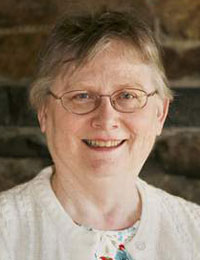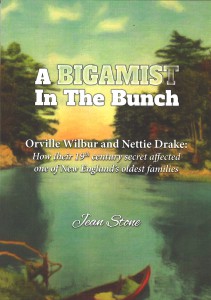 First, a clarification. When I pulled out Richard Newton’s name for the example in my last post, I did not check to see whether he was a Great Migration immigrant. Turns out he is. However, as his Great Migration sketch is not on the horizon, we will continue to pretend he belongs to the Early New England Families Study Project! Continue reading Collecting published accounts: Part Two
First, a clarification. When I pulled out Richard Newton’s name for the example in my last post, I did not check to see whether he was a Great Migration immigrant. Turns out he is. However, as his Great Migration sketch is not on the horizon, we will continue to pretend he belongs to the Early New England Families Study Project! Continue reading Collecting published accounts: Part Two
Monthly Archives: June 2015
“Remember your ancestors”
So read the words atop a family record engraved by Richard Brunton in the early 1800s. It is that admonition, which speaks directly to the NEHGS purpose, that led us to have an interest in Brunton – now the subject of a new book written by art historian Deborah M. Child: Soldier, Engraver, Forger: Richard Brunton’s Life on the Fringe in America’s New Republic.
Over the centuries, families have kept records of their history: in pen and ink, in needlework, and now in printed books and in electronic media. Families have kept these “documents” not just as cherished mementos of loved ones, past and present, but also as the “central repository” for the vital records of the family and its members. Richard Brunton – an English soldier who deserted during the American Revolution and made his home in New England – was a trained engraver. During the years when he was traveling throughout New England practicing his craft – sometimes even in the production of counterfeit bank notes – he was, in his own way, at the vanguard of the business of producing family register forms, something that would only increase and become more commercially viable in the following decades. Continue reading “Remember your ancestors”
Overlapping generations

When I was born, I had two living great-grandmothers. The elder was my matrilineal great-grandmother, Pauline (Boucher) Glidden (1875–1964), whom I never had the chance to meet; the other was my paternal grandmother’s stepmother, Annabelle May (Phillips) (Ayer) Whistler (1906–2000), who outlived my great-grandfather by more than forty years and died when I was an adult. I met her only once, but I still think of her often, as I have the dining room set from her house in Florida!
My approach to research, as I’ve mentioned elsewhere, is to look at collateral relatives as much as I look at my direct ancestry. Continue reading Overlapping generations
Writing family history: Start small
 Earlier this year, I read a blog post by the New York Public Library titled “20 Reasons Why You Should Write Your Family History.” Always on the lookout for new ideas to work into our seminars and webinars on writing and publishing, I read it eagerly. One particular thing caught my eye: a quote from John Bond’s Story of You, saying, “You are doing a service by leaving a legacy, no matter how small or large.” I’ve thought about that quote a great deal, with a specific focus on the word small.
Earlier this year, I read a blog post by the New York Public Library titled “20 Reasons Why You Should Write Your Family History.” Always on the lookout for new ideas to work into our seminars and webinars on writing and publishing, I read it eagerly. One particular thing caught my eye: a quote from John Bond’s Story of You, saying, “You are doing a service by leaving a legacy, no matter how small or large.” I’ve thought about that quote a great deal, with a specific focus on the word small.
Starting small is great advice for the family historian looking to write and publish. I’ve spoken with many people who struggle with just how to get started. They might have years’ worth of data, in paper files and electronic files. How should they organize it? What should be their focus? It seems such a daunting task that they simply can’t get going – or can’t complete what they’ve set out to do. Continue reading Writing family history: Start small
Collecting published accounts
 This may turn out like watching sausage being made or paint dry, but let’s walk through the process of creating an Early New England Families Study Project entry.
This may turn out like watching sausage being made or paint dry, but let’s walk through the process of creating an Early New England Families Study Project entry.
We start with the entry from Torrey’s New England Marriages Prior to 1700:
NEWTON, Richard (–1701) & Anne/Hannah? [LOKER/ RIDDLESDALE] (ca 1616–1697); by 1641; Sudbury {Stevens-Miller 132, 138, 143; Marston-Weaver 47; Warner-Harrington 414, 471; Reg. 49:341; Bullard Anc. 153; Chaffee (1911) 134; Holman Ms: Loker 3; Moore Anc. 399; Framingham Hist. 340, 342?; Marlboro Hist. 421; Bent Anc. 27; Newton (#4) 17-18; Bigelow-Howe 94; Leonard (#2) 49; Cutler 2:5; Morris-Flynt 56; Tingley-Meyers 92} Continue reading Collecting published accounts
An historic event

What an amazing opportunity it was to be part of the historic Global Family Reunion held in Queens, New York, on June 6, 2015, where I had the chance to meet NEHGS members, longtime friends and colleagues in the field of genealogy, and more than 3,500 new “cousins”! Continue reading An historic event
Twenty-four degrees of separation
 Thousands are expected to gather on Saturday, June 6, at the New York Hall of Science in Flushing Meadows, Queens, for the very first Global Family Reunion – founded by bestselling author A.J. Jacobs – who describes himself as “father of three, the husband of one, and the cousin to millions.” Expected to be the biggest, most extraordinary, and most inclusive family reunion in history, the world of genealogy is indeed watching this one and smiling. Continue reading Twenty-four degrees of separation
Thousands are expected to gather on Saturday, June 6, at the New York Hall of Science in Flushing Meadows, Queens, for the very first Global Family Reunion – founded by bestselling author A.J. Jacobs – who describes himself as “father of three, the husband of one, and the cousin to millions.” Expected to be the biggest, most extraordinary, and most inclusive family reunion in history, the world of genealogy is indeed watching this one and smiling. Continue reading Twenty-four degrees of separation
Behind the scenes in the Conservation Lab
The von Wolfframsdorff Armorial Family Tree

To poke one’s head inside the Conservation Lab here at NEHGS is to observe a beehive of activity. This is where our Conservation Technician Deborah Rossi, part-time interns, and volunteers repair and treat books and manuscripts from the NEHGS collections. Last year, they repaired and treated over 250 volumes, documents, and other works on paper. A wide range of items (and condition issues) make their way to the lab, and we’d like to share a recent example with you. Continue reading Behind the scenes in the Conservation Lab
Compiling the Great Migration Directory
 In the fall of 2010 I was in the midst of researching and writing the seventh and final volume in the Great Migration second series. The publication of that volume in 2011 would mean that sketches had been published for all Great Migration immigrants from 1620 to 1635, somewhat less than one-half of all those who came to New England during the entire Great Migration period, from 1620 to 1640. Given the quarter-century it has taken to reach this point in the Great Migration Study Project, I eventually, and reluctantly, concluded that I would not be the person to write the sketches for immigrants who arrived in New England between 1636 and 1640. And yet I did not want to abandon the Project at that point, and so began to cast about for a mechanism by which I could at least survey the remaining immigrants. Continue reading Compiling the Great Migration Directory
In the fall of 2010 I was in the midst of researching and writing the seventh and final volume in the Great Migration second series. The publication of that volume in 2011 would mean that sketches had been published for all Great Migration immigrants from 1620 to 1635, somewhat less than one-half of all those who came to New England during the entire Great Migration period, from 1620 to 1640. Given the quarter-century it has taken to reach this point in the Great Migration Study Project, I eventually, and reluctantly, concluded that I would not be the person to write the sketches for immigrants who arrived in New England between 1636 and 1640. And yet I did not want to abandon the Project at that point, and so began to cast about for a mechanism by which I could at least survey the remaining immigrants. Continue reading Compiling the Great Migration Directory
First Settlers of Connecticut
 Other than Vermont, the five New England states had significant European-derived settlements in the early colonial period. In late nineteenth and early twentieth centuries, “genealogical dictionaries” were produced for the states of Rhode Island,[1] Massachusetts,[2] and Maine and New Hampshire (together).[3] Such a dictionary was not completed for Connecticut, but Royal Ralph Hinman had made an earlier attempt in the mid-nineteenth century which can serve as an initial reference when researching seventeenth-century families of Connecticut. Continue reading First Settlers of Connecticut
Other than Vermont, the five New England states had significant European-derived settlements in the early colonial period. In late nineteenth and early twentieth centuries, “genealogical dictionaries” were produced for the states of Rhode Island,[1] Massachusetts,[2] and Maine and New Hampshire (together).[3] Such a dictionary was not completed for Connecticut, but Royal Ralph Hinman had made an earlier attempt in the mid-nineteenth century which can serve as an initial reference when researching seventeenth-century families of Connecticut. Continue reading First Settlers of Connecticut
